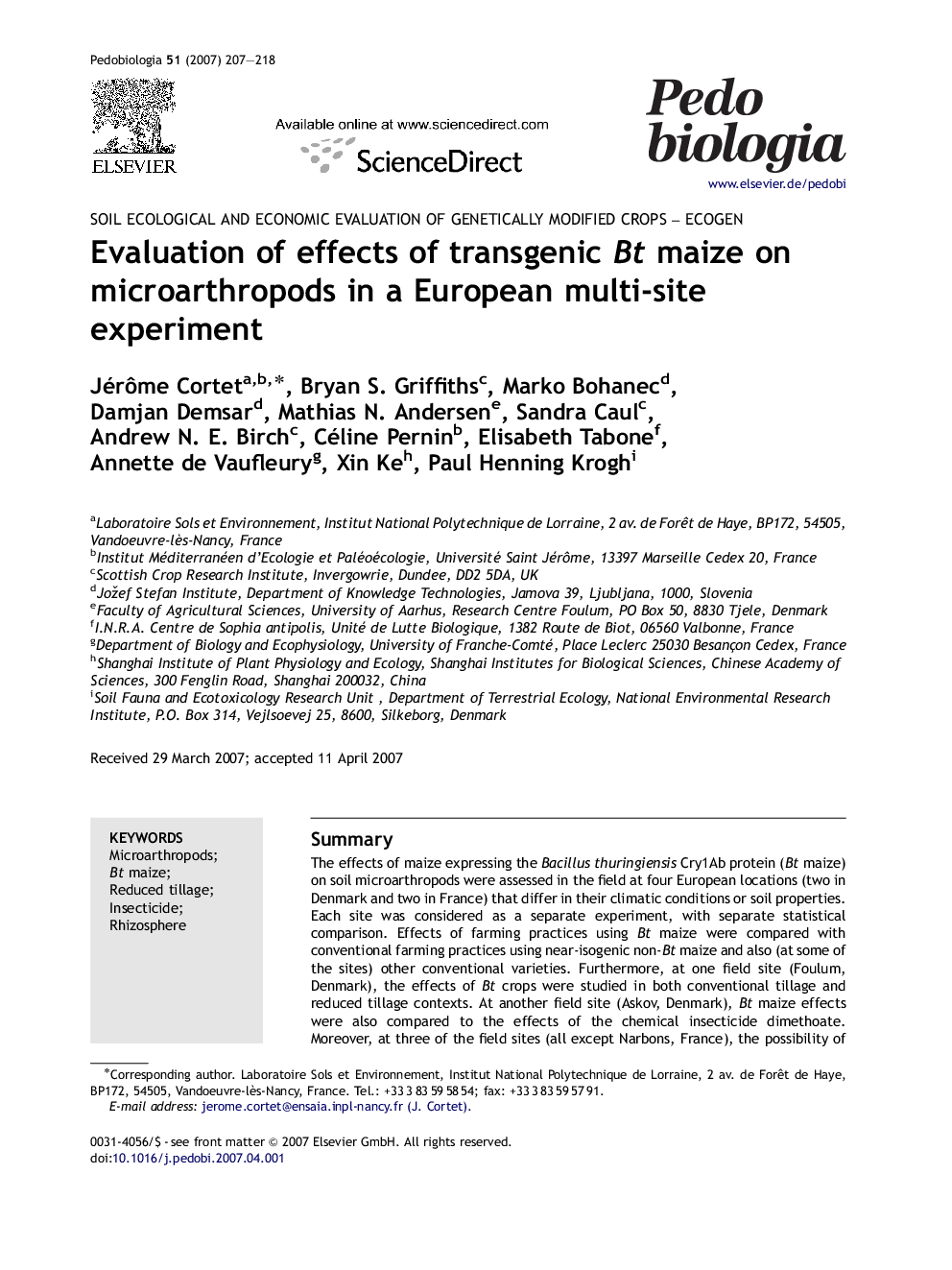| Article ID | Journal | Published Year | Pages | File Type |
|---|---|---|---|---|
| 2061544 | Pedobiologia | 2007 | 12 Pages |
SummaryThe effects of maize expressing the Bacillus thuringiensis Cry1Ab protein (Bt maize) on soil microarthropods were assessed in the field at four European locations (two in Denmark and two in France) that differ in their climatic conditions or soil properties. Each site was considered as a separate experiment, with separate statistical comparison. Effects of farming practices using Bt maize were compared with conventional farming practices using near-isogenic non-Bt maize and also (at some of the sites) other conventional varieties. Furthermore, at one field site (Foulum, Denmark), the effects of Bt crops were studied in both conventional tillage and reduced tillage contexts. At another field site (Askov, Denmark), Bt maize effects were also compared to the effects of the chemical insecticide dimethoate. Moreover, at three of the field sites (all except Narbons, France), the possibility of a localised Bt effect around the rhizosphere compared to the bulk soil was assessed by sampling within and between maize rows. There were some significant negative effects of Bt maize on microarthropods in soils with a high clay content. Significant differences of the same magnitude also occurred between different conventional varieties of maize, but the effect of dimethoate appeared clearly greater than Bt effects. It is thus debatable if the Bt maize effect is an effect of the Bt toxin or just an effect of the maize variety. Based on the results, it can be concluded that the effect of Bt maize on soil microarthropods was small and within the normal variation expected in conventional agricultural systems.
